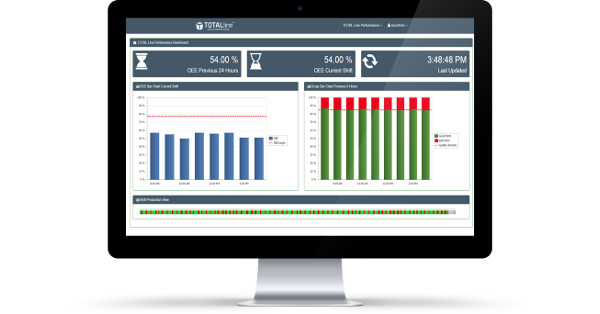OEE is one of the most important performance measurements in modern manufacturing facilities. By optimising OEE, you can increase capacity, reduce costs, improve quality, and/or increase efficiencies in your production lines.
Now, here is the really interesting part – it’s possible to achieve significant performance gains in your manufacturing facility by optimising OEE. Before getting into that, though, here is a more detailed explanation of OEE and its benefits.
Overall Equipment Effectiveness
OEE stands for Overall Equipment Effectiveness. It is a method of analysing the performance of a machine or piece of equipment compared to its theoretical maximum capacity. OEE applies only to periods when the machine or piece of equipment is scheduled to run, though, i.e. you don’t include overnight downtime if the machine is not scheduled to run overnight.
OEE includes three main factors:
- Availability
- Performance
- Quality
So, a production line which has an OEE of 100 percent will manufacture only good products with no defects (quality), production will run as fast as it can (performance), and there will be no stop time, even for short periods (availability).
Issues that Impact OEE
- Availability – planned stops in production for setups and adjustments such as planned maintenance, cleaning, and quality inspections. In addition, unplanned stops in production, typically because of breakdowns, also negatively impacts OEE. Short stops and short periods of idle time are important too. These stops can occur for a range of different reasons including blocked sensors, misfeeds, and jams.
- Performance – this applies when production doesn’t run at its full capacity. This could be because of worn out equipment, poorly maintained equipment, environmental factors, or operator issues. Examples of the latter include operator errors, inexperience, or availability.
- Quality – defective products as well as the reduced yield that occurs as a consequence of defective products. Examples include operator error, wrong settings, and inefficient batch changeover processes.
Why Is OEE Important?
You may have significant capacity potential in your factory that OEE optimisation can release. This will increase production and/or make your operation more efficient and cost-effective.
In addition, taking steps to improve OEE is almost always more cost-effective than the alternatives. This particularly applies in the long-term but often also applies in the short and medium-term too. The alternatives include adding a new shift, increasing overtime, purchasing new equipment, outsourcing production, or opening a new facility.
Currently, an OEE score of 85 percent is considered exceptional. The reality is that many manufacturing facilities fall well below this rate, making significant improvements possible.
Benefits of OEE in Manufacturing
- Ensures you use existing equipment to its fullest capacity, reducing the need for investment in other areas
- Gives you a better oversight of the production process, so you understand where the real problems exist and how to prioritise them.
- Delivers significant return on investment whether you are increasing capacity, driving efficiencies, launching new products, and more.
- Helps you maintain competitiveness in the market, particularly in competitive industries like pharmaceutical and medical device manufacturing.
- Improved process quality which will save you time and money as well as helping maintain your reputation in the market while also avoiding the risks and consequences of product recalls.
- Reduces machine maintenance and repair costs as you can put proper plans and schedules in place.
- Improves the scalability of your production line.
How to Make Performance Gains Using OEE
The first step is to put in place real-time, condition-based monitoring of equipment in your production line. This means gathering, storing, and analysing data to identify the most important areas for OEE improvement.
With this information, you can then allocate a budget to improve OEE and achieve your overall objective which, in most cases, involves providing better value, service, and products to your customers.





